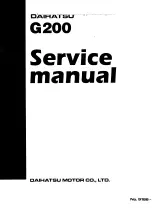
14
HYBRID OVERVIEW (IF EQUIPPED)
HYBRID FEATURES
The Malibu Hybrid has an electric drive unit integrated with the highly efficient 1.8-liter
four-cylinder engine. This blending of electric and gasoline propulsion maximizes fuel
economy. The system continuously adjusts the operation of the engine, high-powered
electric drive unit and trunk-mounted lithium-ion battery to provide outstanding
performance while using significantly less fuel than a conventionally powered vehicle.
HYBRID OPERATION
While driving, the gasoline engine will seamlessly turn on when necessary to provide
power. It will turn off when not needed to save fuel.
The engine may remain running while driving when:
• Accelerating or driving up hills.
• Vehicle speed is greater than 55 mph (88 kph).
• Charging the high-voltage battery.
• Cabin warming is requested based on the climate control settings.
The engine and electric drive unit work together to provide the required propulsion
power at the highest efficiency. This may result in higher engine speeds than expected.
See Driving and Operating in your Owner’s Manual.
VEHICLE STARTING
With the vehicle in Park or Neutral, press the brake pedal and then press the ENGINE
START/STOP button.
The
Vehicle Ready indicator will illuminate when the vehicle is ready to be driven.
The engine will start only if required to charge the high-voltage battery or to warm
the cabin.
In temperatures below 32° F/0° C, the engine start will be delayed while the hybrid
system is initializing. The “Initializing – Wait To Shift” message will be displayed on the
Driver Information Center. Wait to shift the vehicle from Park until the message is no
longer displayed and the Vehicle Ready indicator is illuminated.
REGENERATIVE BRAKING
Regenerative braking captures some of the kinetic energy from the moving vehicle and
stores it in the high-voltage battery, contributing to increased energy efficiency. Braking
less aggressively allows for more energy recovery.
HYBRID LOW GEAR
Operating in Low Gear provides the ability to slow without using the brakes. Vehicle
operation during acceleration and cruising is not changed.
L2 (Low 2) – increased regenerative braking as the accelerator pedal is released.
L1 (Low 1) – maximum regenerative braking to slow the vehicle.
L (Low) – should be used when descending steep grades or in stop-and-go traffic.


































